Bradley and Hubbard Manufacturing Company
BY JEANNE WENRICH
Copyright © 1989 The Rushlight Club. All rights reserved.
In November of 1874 the Crockery and Glass Journal reported that "all the factories in Meriden, Connecticut, are running over time. Bradley & Hubbard is especially busy this season with their regular fall trade of gas and kerosene fixtures and bronze ornaments. A large foreign order for gas-chandeliers, to be filled early next year, gives evidence of the advancing reputation of this house. They employ at present over four hundred hands, and preparations have already been made for adding, next year, another four story brick building to their present extensive establishment. Within the past year they have removed their New York show room (Murray and Park Place) to the commodious chambers, Nos. 21 and 23 Barclay Street, where a comprehensive display is made of the wares of their manufacture."
A few months later, in 1875, the final reorganization of Bradley & Hubbard took place. The joint stock company name became Bradley & Hubbard Manufacturing Company, with Walter Hubbard as President and Nathaniel Bradley as Treasurer. This name was retained until 1940 when the Charles Parker Company, part of Union Manufacturing Company, bought out the company. The Charles Parker Company is still manufacturing steel bathroom equipment and building products in Meriden.
In 1850, Nathaniel L. Bradley, then twenty-one years old, gave up farming to sell clocks. He was so successful as a salesman that he was elected a director of the clock company. In 1852, Bradley joined with the Hatch brothers to form the Bradley, Hatch Company, and proceeded to make clocks. Their $5000 capital was well invested. By 1854 the growing business needed more money to expand. The Hatch brothers left the business and it was reorganized as Bradley & Hubbard. Nathaniel L. Bradley, his brother William L., and his brother-in-law Walter Hubbard became officers. Walter left his dry goods business to join in the venture.
The clocks that Bradley & Hubbard produced were made with porcelain enamel dials and sold at one half the price of imported clocks. Needless to say, they sold very well.
In 1862 the Civil War destroyed the sale of clocks and the company survived by making flags. The 1859 success of Drake's Pennsylvania oil well and the subsequent increase during the 1860s of the use of kerosene as a lamp fuel made Bradley realize that kerosene lamps would be profitable to manufacture. He designed a complete collection of lamps to sell and, in 1871, opened a store in New York City at 20 Murray and 23 Park Place.
In early 1875 Bradley & Hubbard were completing a special order for eight gas chandeliers of forty-two lights each, made of cast bronze, weighing about one thousand pounds each. These chandeliers were electroplated with pure gold. Unfortunately, there is no indication of the purchaser's name. What a wonderful sight those chandeliers must have been!
The Crockery and Glass Journal of October, 1875, reported about Bradley & Hubbard that "this old and established house makes a fine display of gas and kerosene fixtures, lamps, call-bells, etc. Their chandeliers and Newell lights are beautiful ... Their card stands ... chess tables ... American bronzes, such as birds, animals, busts, and statuettes ... are ... handsome." In fact, Bradley & Hubbard Manufacturing Company was the sole manufacturer of callbells in the United States. They manufactured a wide variety of metal goods including vases, urns, card receivers, umbrella stands, andirons, fireplace furniture, candlesticks, frames and much more. They were successfully competing with foreign manufacturers, selling quality goods at a lower price.
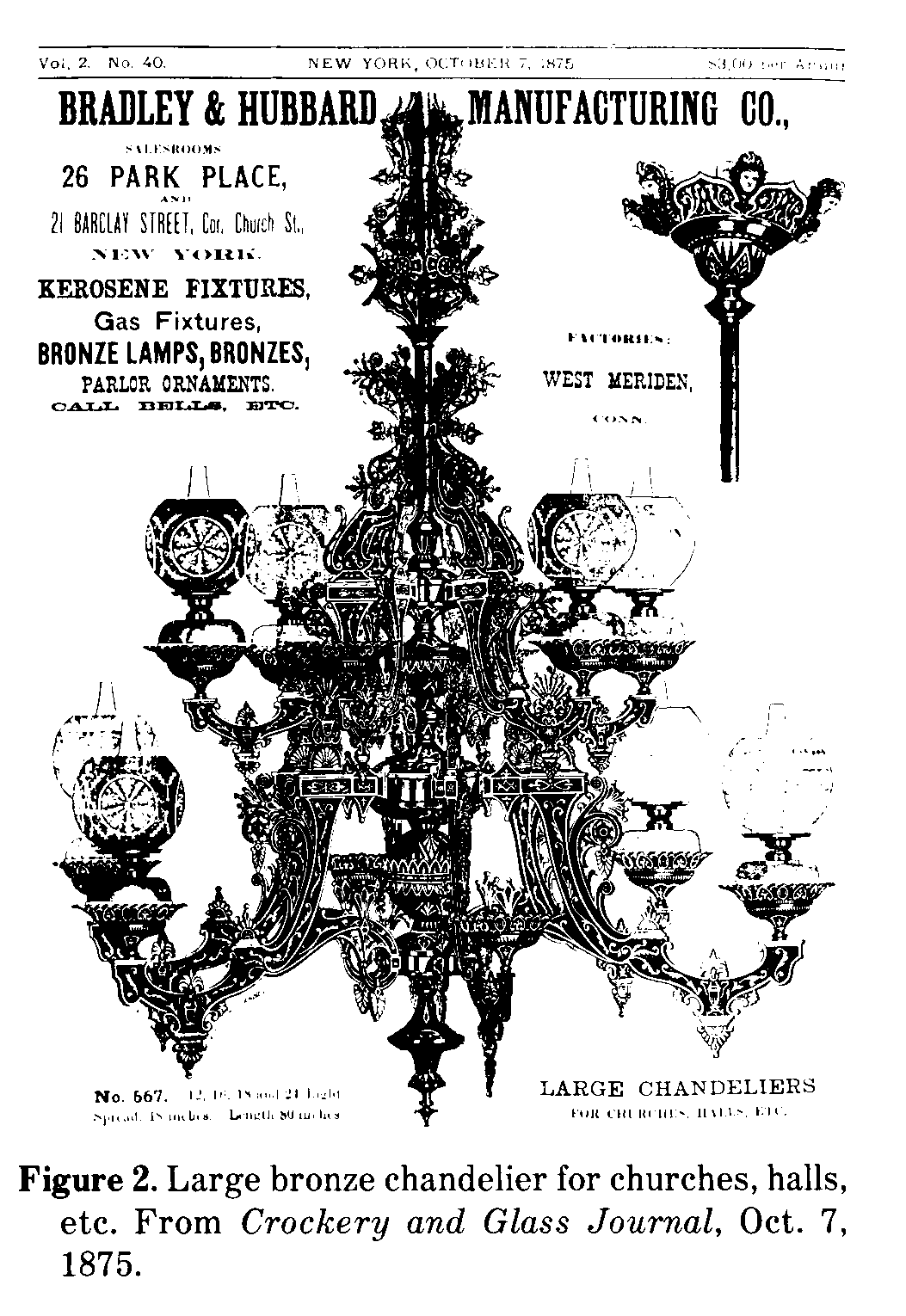
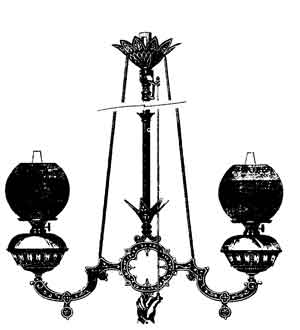
My chief interest, however, is in their oil lamps. In April, 1875, the first advertisements using the new name of Bradley & Hubbard Manufacturing Company were found in the Crockery and Glass Journal. By June of 1875, Bradley & Hubbard were advertising their "Improved Patent Extension for Raising and Lowering a Chandelier" (Figure 1)
In October, 1875, they advertised an elaborate kerosene chandelier (Figure 2) for churches, halls, etc., available as 12, 16, 18 or 24 lights, measuring 80 inches in length.
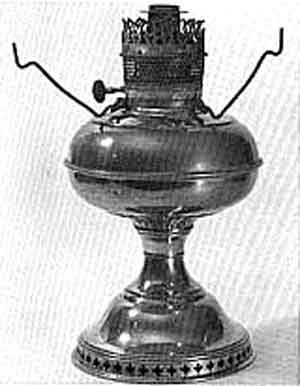
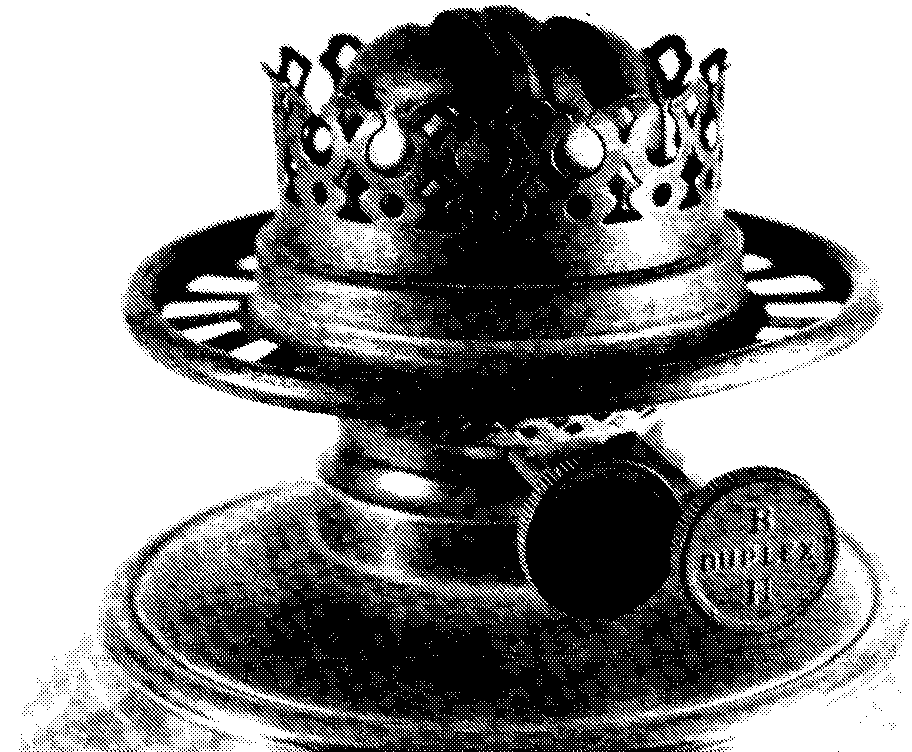
In June, 1876, a review of Bradley & Hubbard's display at the Centennial Exhibit in Philadelphia mentions their lamps: "In the lamp and chandelier line there is a profuse display." Among those described were a 24 light copper bronzed gas chandelier, gilt, "in gothic pattern," and 12 light ones in "green bronze with black scroll and floral ornaments," with ground and cut globes, "adapted for the use of either gas or kerosene." The "Newel" lights were shown in bronzes of various colors, the "statuesque ones" being judged "especially fine." Also included were a number of stand lamps in the shape of vases, etc. Pulpit lamps were available in gilt on brass or nickel plate, finished with crystal pendants.
Bradley & Hubbard Manufacturing Company produced several different types of burners. (Figure 3) shows their double flat wick burner with snuffers. Both thumb wheels carry the mark "B and H" and the word "DUPLEX".
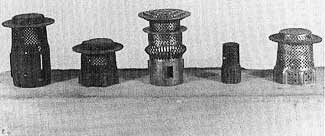
Figure 4 shows another Bradley & Hubbard burner, on an inexpensive (in its day) nickel plate lamp. The patent dates on the burner are Nov. 20, 1894 and March 24, 1896. It is a round wick, center draft burner with a thumb wheel. Bradley & Hubbard were advertising center draft, Rochester type burners in 1889 that carried patents from 1884. From then on they patented a number of improvements to their burners. In Figure 5 are five types of flame deflectors used in center draft, round wick burners made by Bradley & Hubbard, with their associated patent dates.
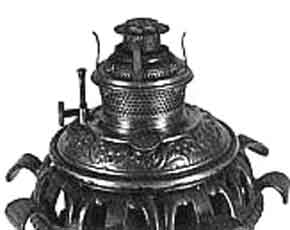
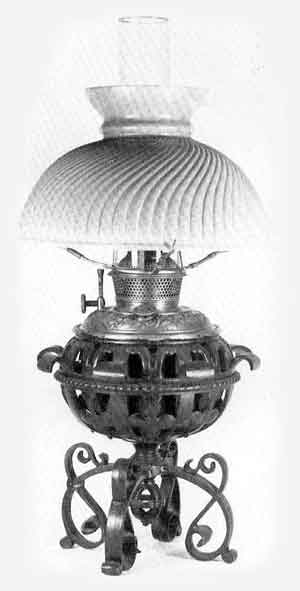
The center draft, round wick burner in Figure 6 has a rack and pinion wick raiser. Its patent dates are from 1892 to 1905. It is used on the wrought iron lamp with a brass font seen in Figure 7.
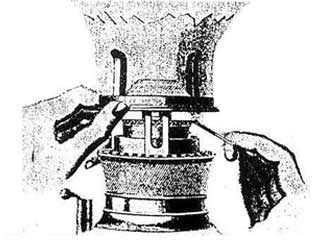
In July, 1892, Bradley & Hubbard advertised a new addition to their burners. A patented lift attachment (Figure 8), "which avoids the difficulty of removing the shade or chimney when lighting." The announcement continued, "this season this burner will be placed upon all of their B & H Lamps with the exception of a few staple patterns." Bradley & Hubbard Manufacturing Company urged its customers to buy the "genuine B & H" lamp, and one can find the company mark on some part of each of their lamps. This mark can be a simple "B.H." or "B & H" inside a decorative logo (Figure 9). An Aladdin lamp inside a triangle (Figure 10) is found on a Bradley & Hubbard metal box.
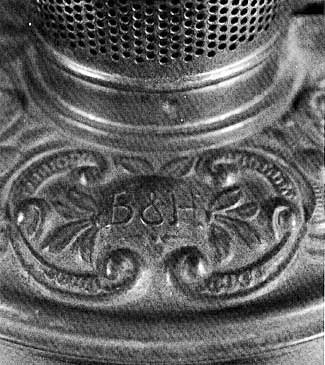
The 1897 Crockery and Glass Journal reported that, "Bradley & Hubbard sent down the last installment of their new goods this week, and now the line in the New York store is complete. This new line is a queer lot of odd shapes, novel in the extreme, and their very oddity will make them take. They are all table lamps, some with feet (Figure 11) and some without. They are in colors and in antique finishes, and are worth seeing." At this time Bradley & Hubbard were manufacturing chandeliers, piano lamps, brackets, banquet lamps, bordeaux lamps, table lamps and hanging lamps. These were made in a variety of brass, bronze and wrought iron, and carried the center draft Bradley & Hubbard burner.
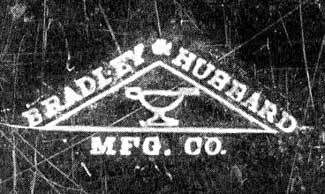
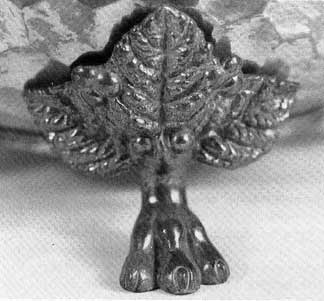
Bradley & Hubbard Manufacturing Company worked in metal. When they had need for glass fonts, shades or chimneys, they purchased the material from glass houses. Shades and chimneys were provided by the Meriden Flint Glass Company, established in Meriden, Connecticut, about 1874. Their advertisement in the June, 1876 issue of Crockery and Glass Journal read: "Rich cut glassware and opal goods, plain and decorated. Etched globes and shades." The Meriden Historical Society says that Meriden Flint Glass had as its primary purpose to produce glass for use by the many manufacturing companies of the area.
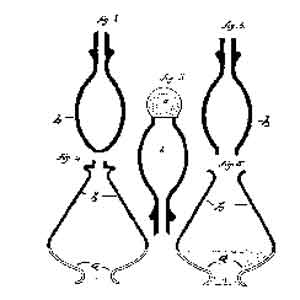
Patent No. 189,180 (dated April 3, 1877) specified an improvement in the manufacturing of glass globes, shades, etc. The patent was taken out by J. Bourne, but assigned to the Meriden Flint Glass Company. A Bourne patent one-piece shade-chimney with clear glass bottom and opal glass top is shown in Figure 12. Meriden Flint Glass Company apparently made these types of products for Bradley & Hubbard for some time.
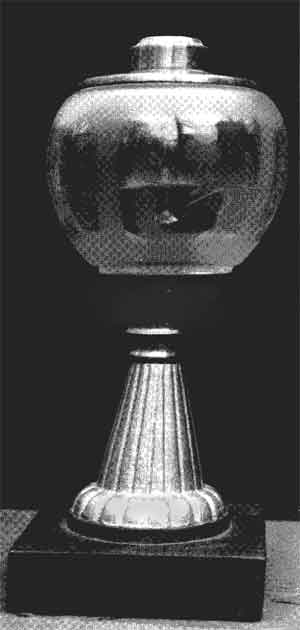
The August, 1892, issue of Crockery and Glass Journal reveals that the Fostoria Shade and Lamp Company of Fostoria, Ohio, was making "shades and fonts of decorated and cased glass for fixtures of Miller, Ansonia Brass & Glass Company, Holmes Booth & Haydens and BRADLEY AND HUBBARD."
Catherine Thuro, in Oil Lamps II, says that Bradley & Hubbard bought lamp pegs and fonts from the Mt. Washington Glass Works of New Bedford, Massachusetts, from 1876 through the 1890s.
The Macbeth catalog of 1901 has a long list of Bradley & Hubbard lamps with the appropriate Macbeth chimney to fit the burner of each.
Figure 13 is a Bradley & Hubbard lamp No. 030. Thuro in Oil Lamps II lists it as a lamp of the 1880s.
An article by Bruce Mann in a Rochester, N.Y. newspaper states that the Vacuum Oil Company, founded shortly after the discovery of oil in western Pennsylvania, was selling oil in China within its first few years. Vacuum Oil became one of the largest sellers of oil in China and gave away thousands of lamps (not named) to the Chinese in the hopes they could sell them kerosene. In the early 1920s Vacuum sold out to Standard Oil of New York. Mann claims that it was Vacuum Oil that "literally opened up China and was a dominant factor in Chinese trials and tribulations up to the time the Communist Party took over at the close of World War II." It would be interesting to relate this company to the Mei Foo lamp discussed in the last Rushlight issue.
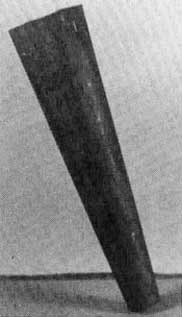
Bradley & Hubbard manufactured the Rayo Standard Oil Company lamp. Since Standard Oil also was among the largest sellers of oil in the Far East, I wonder if many Rayo's are still working in the People's Republic of China today. Figure 14 shows a rolled tin oil funnel stamped "Filler for Rayo Lamp."
In an article written for Massachusetts Bay Antiques, Jane Doerfer reports that MacRae Curtis, president of the Parker Company, said that he found some of the original dies for Bradley & Hubbard lamps in the plant after Parker bought Bradley & Hubbard. During the 1940s they made and sold exact copies of the Rayo and the Student Lamp, both single and double arm models.
The Charles Parker Company was a well-established Meriden firm in the late 1800s. Among their many products they produced a lamp called the "Parker". They also made chandeliers, library, piano and parlor lamps. I have not been able to identify any Parker lamps in my area of New York state.
Jane Nylander, Director of Strawberry Banke, says "history is a form of inquiry. No matter at what point you write your footnote, you'll learn more the next day, and your work will be reinterpreted in the future." So may this report of mine on the Bradley & Hubbard company be one more "footnote" in the sands of time.